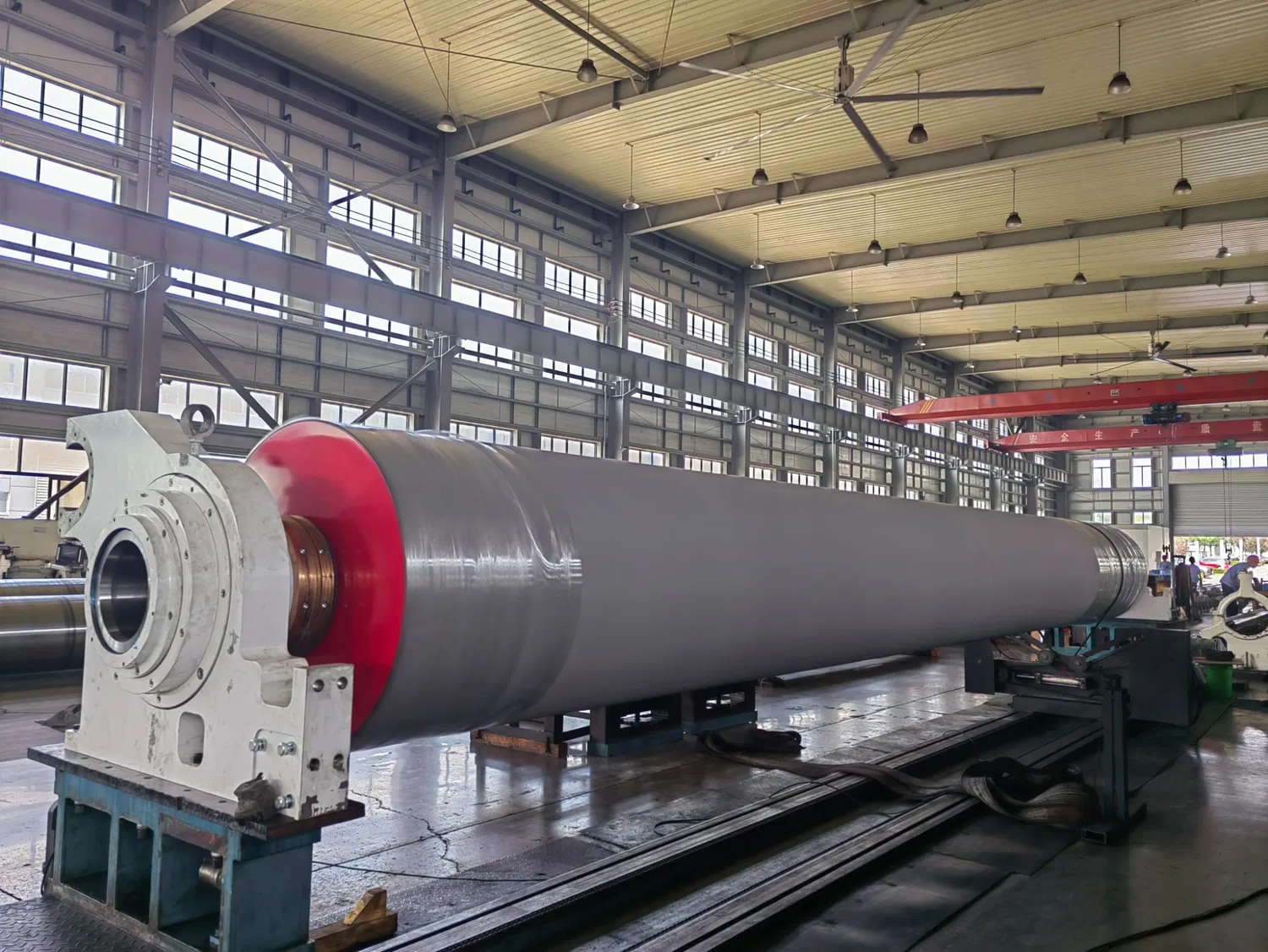Stone rolls are integral to the tissue manufacturing process, contributing significantly to the softness, absorbency, and overall quality of the finished product. These large, precisely engineered cylinders are far more than simple rollers; they are the heart of the creping process, the stage where tissue paper gains its signature texture.
The interaction between the stone roll and the Yankee dryer is where the magic happens. A thin layer of tissue adheres to the heated Yankee dryer surface. As the Yankee rotates, it brings the tissue into contact with the stone roll. The controlled pressure and specific surface properties of the stone roll then delicately peel, or "crepe," the tissue from the dryer.
This creping action is what gives tissue paper its characteristic crinkled texture. The degree of creping, controlled by factors like the roll’s hardness and surface topography, directly influences the final product's softness, strength, and absorbency. A lightly creped tissue will be smoother and stronger, while a heavily creped tissue will be softer and more absorbent.
The composition of the stone roll itself is critical to its performance. Typically made from specialized ceramic materials, these rolls are engineered to withstand high temperatures, resist wear, and maintain a consistent surface finish. The specific material properties influence the heat transfer between the Yankee and the tissue, affecting the drying process and the final sheet characteristics.
Different grades of tissue paper require different creping techniques. Facial tissues, for instance, demand a gentler crepe for a softer feel, while toilet paper often benefits from a heavier crepe for increased bulk and absorbency. This variation necessitates careful selection of the appropriate stone roll, considering factors like its diameter, hardness, and surface roughness.
Maintaining the stone roll is crucial for consistent tissue quality. Regular cleaning and conditioning prevent build-up and ensure optimal performance. Microscopic imperfections or debris on the roll’s surface can translate into defects in the finished tissue, impacting its texture and overall quality. Think of it like keeping a well-honed knife – consistent maintenance is key to optimal performance.
Beyond creping, stone rolls also play a role in the drying process. By applying pressure against the Yankee dryer, they help to ensure uniform contact and efficient heat transfer, facilitating the rapid evaporation of moisture from the tissue web. This combined action of creping and drying is what allows tissue machines to operate at high speeds, producing vast quantities of finished product.
The technology behind stone rolls continues to evolve. Manufacturers are constantly researching and developing new materials and surface treatments to enhance performance and optimize the creping process. These advancements contribute to improvements in tissue quality, allowing for even softer, stronger, and more absorbent products. What are the future possibilities for these unsung heroes of the tissue industry?
The specific characteristics of the stone roll, such as its diameter, hardness, and surface finish, are carefully selected based on the desired tissue properties. For example, a larger diameter roll can create a gentler crepe, while a harder roll will produce a more pronounced texture. These variables offer manufacturers a high degree of control over the final product's attributes.
Consider the sheer volume of tissue paper consumed daily – from bathroom tissues to facial tissues to paper towels. The stone roll plays a silent but essential role in creating these everyday necessities. Have you ever stopped to think about the intricate processes behind the creation of something as seemingly simple as a sheet of toilet paper?
The selection and maintenance of stone rolls are vital considerations for any tissue manufacturer. By understanding the complex interplay between the stone roll, the Yankee dryer, and the tissue web, manufacturers can optimize their processes to produce high-quality tissue products that meet the demands of consumers worldwide.



